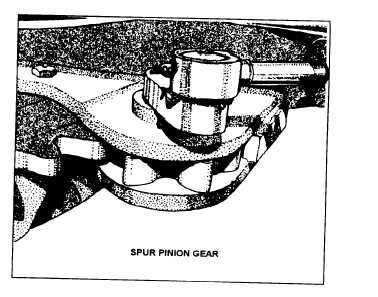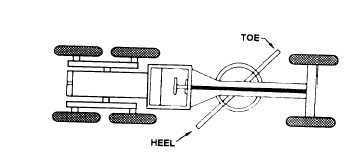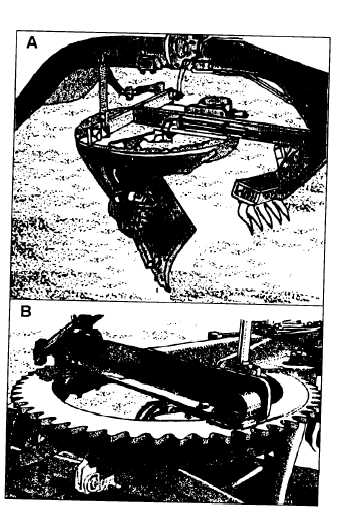Figure 10-6.-Moldboard.
Figure 10-7.-Blade heel and toe.
tool of the grader that can be lifted, lowered. rotated.
tilted forward and backward, shifted to one side or the
other, and angled horizontal (fig. 10-6).
The cutting edge and end bits are bolted to the
moldboard. They act as wear plates and must be
replaced or reversed when worn or broken. In most
cases, the bolts will have to be replaced too.
NOTE: Always keep enough cutting edges and end
bits on hand to protect the moldboard from wear or
damage.
The length of the blade is normally 12 or 14 feet.
The curve shape of the blade causes dirt to roll and mix,
as it is cut and moved. The rotary movement of the dirt
combined with the angle of the blade causes a side-cast
drift of the material.
When the blade is angled to position one end ahead
of the other, two terms are used to designate the blade
ends. They are the heel and the toe of the blade. Figure
10-7 shows that the toe is the leading edge of the blade;
Figure 10-8.—Circle.
the heel is the trailing edge. When the blade is turned
so the toe is to your left, as you sit in the operator’s
seat, the material will side cast to your right and spill
Figure 10-9.-Spur-pinion gear.
10-4







